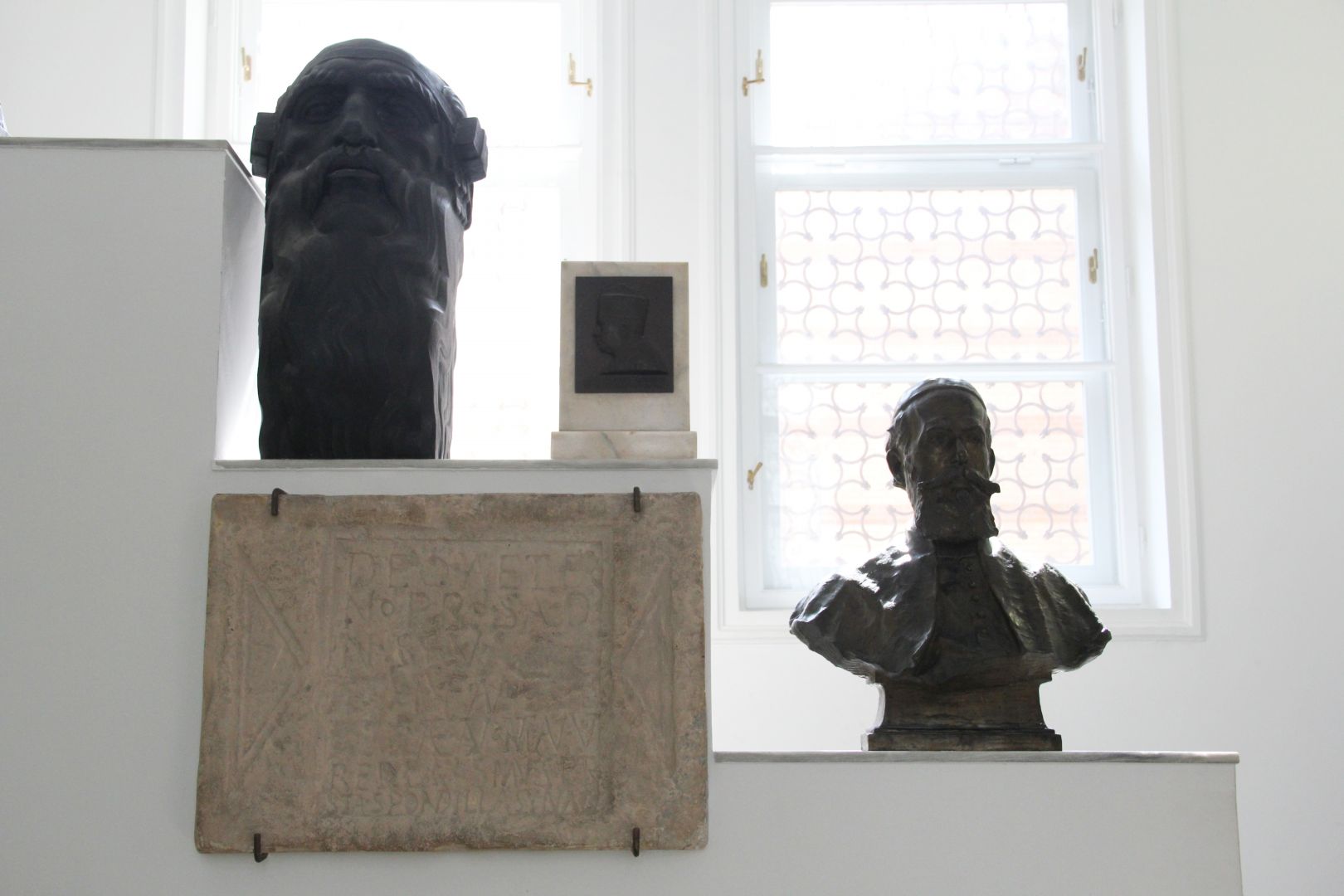Entrance
Sámuel Kohn sculpture
The bronze bust of Sámuel Kohn was made for the order of the Jewish Museum in 1936, with the subsidy of the son of Sámuel Kohn, Géza Kovács.
Sámuel Kohn as a historiographer collected the Hebrew sources concerning Hungarian history, and he was the first who wroted about Hungarian Jewish antiquities and about the importance of collecting and preserving the Jewish historical sources.
In 1896, for the Millenium of Hungary, there was a Millennial Exhibition, which was established with his guidance, to show for the first time the historical and material relic of Hungarian Jewry. This collection’s fragment became the core material of the newly opened Jewish Museum twenty years after.
Sámuel Kohn was born in 1841, he was the grandchild of the famous rabbi from Baja, Schwerin Götz Kohn. He was ordained as a rabbi at the rabbinical seminar in Wrocław (Breslau), in one of the era’s most important places for modern Jewish scholarship, after his studies in the yeshiva of Pápa and Kismarton (Eisenstadt). He was elected to be the rabbi of the Great Dohány Synagogue in 1866, and he was the one who instituted the Hungarian sermons.
He published his work “The History of the Jews in Hungary” in 1884, in which he set up a new theory: according to this, the Jews of Hungary were descendants of the Khazars who had converted to the Jewish faith for a century in the eighth century, who – as „mózesvallású magyarok” („Hungarians with the religion of Moses”) - arrived in the Carpathian Basin at the same time as the conquering Hungarians. The theory of Khazar relation was denied scientifically in the year of its publication, but it became very popular in the strongly assimilating Jewish community in Hungary.
The Jewish community accused of rootlessness loved to refer Kohn's theory, although the history of Jewish communities in Hungary was not continuous: after the medieval antecedents, during the Turkish occupation and then during the eighteenth-century resettlement, the Jewish population changed several times. His theory also appeared at later historians, and almost till today it defines the historical consciousness of Hungarian Jews.
The statue was made by the famous Jewish sculptor Ede Telcs, also from Baja, for the request of the museum, with the financial support of Kohn's son. Telcs was an acknowledged artist of the era. Among other things, he made a statue of the poet of national romance, Mihály Vörösmarty, as well as the figure of King St. Ladislaus (Szent László) on the monument in the Heroes' Square.
